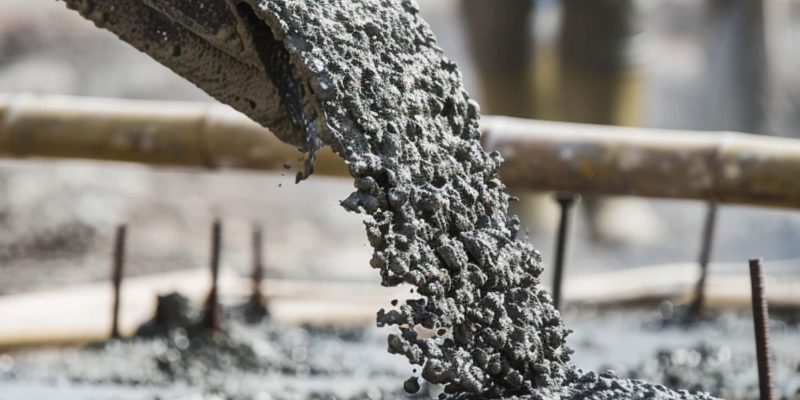With chilly winters, it’s crucial to know something that affects many of our outdoor projects: cold-weather concreting. Whether you’re planning a new driveway, sidewalk, or any other concrete project during the colder months, understanding the basics can make a big difference in how your project turns out.
What is Cold-Weather Concreting?
Cold-weather concreting happens when the air temperature dips below 40°F. But it’s not just about the cold air; it’s about making sure your concrete sets properly without freezing. Why? Because concrete needs the right conditions to strengthen and last for years.
…concrete needs the right conditions to strengthen and last for years.
Why Does It Matter?
You might wonder why we can’t just wait for warmer weather. Well, sometimes, construction schedules can’t wait. Plus, doing it right in colder weather can mean your projects are ready to enjoy by spring. It’s all about not letting the cold stop us from improving our homes and communities.
Challenges Presented by Cold Weather
When the temperature drops, concrete can have a hard time setting (that’s the process of becoming solid and strong). Cold weather slows down the chemical reactions that make concrete harden.
NOTE
When the water in the concrete freezes, it creates tiny ice crystals, leading to cracks and weak concrete that won’t last as long as it should.
The Effects of Cold Weather on Concrete
Now that we’ve introduced the concept of cold-weather concreting, let’s delve into what exactly happens to concrete when the temperatures start to drop.
Initial Setting and Curing Process
Concrete curing is like a plant growing. Just as plants need the right amount of sun and water to grow, concrete needs the right conditions to strengthen. In warm weather, concrete sets (hardens) at a pace that allows it to become strong and durable. However, cold weather puts this process into slow motion, delaying the setting time and making it harder for the concrete to reach its full strength.
Potential for Freezing
Imagine pouring a glass of water and placing it outside on a freezing day. It turns to ice, right? When newly poured concrete gets too cold, the water inside can freeze before the concrete has set. This is a problem because ice expands, creating space inside the concrete. When the ice melts, it leaves behind a weaker structure that’s more likely to crack or crumble over time.
Long-term Durability and Strength
Concrete that doesn’t cure properly in cold weather isn’t just a short-term issue. It can lead to long-term problems, like a driveway that cracks and needs repairs much sooner than expected. Properly cured concrete is like a strong backbone, supporting whatever is built on it for years. But when it’s not cured right because of cold weather, it’s like building a house on a shaky foundation.
Best Practices: Preparation, Pouring and Placing, and Curing
Tackling a concrete project during the colder months doesn’t have to be a daunting task. With the right preparation and techniques, you can pour and place concrete that is strong and lasts long. Here’s how:
Preparation and Material Selection
Site Preparation: Before anything else, clear your site of snow, ice, and water. Use insulating blankets or heated enclosures if necessary to keep the ground from freezing before and during the pour. This step ensures that the cold ground doesn’t suck the warmth out of your concrete, allowing it to maintain the right temperature for curing.
Material Selection: Choosing the right concrete mix is crucial. A mix with a lower water content reduces the risk of freezing and helps the concrete set faster. Also, consider using additives that can accelerate setting time or improve freeze resistance. Your local hardware store or concrete supplier can recommend products suitable for Des Moines’ winter weather.
Pouring and Placing
Temperature Management: Keeping concrete at the correct temperature is key. The concrete should be kept above 50°F for at least the first 48 hours after pouring. This might mean using heated mixing water, adding warm aggregates to the mix, or protecting the poured concrete with blankets or a temporary shelter.
Techniques for Pouring and Placing: Pour and spread the concrete quickly to prevent it from cooling too fast. Then, level and smooth it out using standard tools. Avoid adding water to the surface while finishing, as this can weaken the concrete.
Curing and Protection
Curing Methods: Curing concrete properly is especially important in cold weather. Use concrete curing blankets to retain warmth or plastic sheeting to keep moisture in. For larger projects, heated enclosures might be necessary to maintain optimal temperatures.
Protection Measures: After pouring, protect the concrete from freezing for at least the first 24 hours (but ideally longer). Keep it covered and insulated until it has reached sufficient strength. Also, shield it from the elements by using windbreaks if needed.
Mistakes to Avoid During Cold-Weather Concreting
Embarking on a concrete project during the colder months can be challenging, but being aware of common pitfalls can help ensure your project’s success. Let’s go over some key mistakes to avoid when working with concrete in cold weather.
Inadequate Planning and Preparation
Rushing into the Project: One of the biggest mistakes is not planning. Cold-weather concreting requires extra steps and precautions, so it’s important to allocate additional time for preparation and curing. Failing to account for these can lead to rushed jobs that compromise the concrete’s quality.
Neglecting Site Preparation: Skipping the step of properly preparing the site—by not clearing snow, ice, or water, or failing to preheat the ground—can lead to poor concrete adhesion and freezing from the ground up.
Improper Curing and Protection
Forgetting to Cure: Curing is crucial for concrete strength and durability, even more so in cold weather. Neglecting to properly cure concrete by keeping it moist and at the right temperature can lead to a weak surface prone to damage.
Inadequate Protection: Failing to protect the newly poured concrete from the elements, including freezing temperatures and wind, can cause the concrete to freeze before it sets, leading to potential cracking and structural issues.
Neglecting Temperature Management
Ignoring Concrete Temperature: Not maintaining the concrete at the correct temperature before, during, and after pouring is a critical mistake. Concrete that gets too cold too quickly can suffer from improper setting and reduced strength.
Additional Considerations
When tackling concrete projects during the cold months, there are a few more considerations to keep in mind. These tips ensure not just the success of your project but also its compliance with local regulations and its environmental impact.
Legal and Regulatory Standards
Stay Informed: Different areas have specific codes and standards for concreting, especially in cold weather. It’s important to be aware of and comply with local regulations in Des Moines. This might involve specifications on the types of materials used or the methods of curing and protection.
Permits: For some projects, you might need a permit, especially for larger constructions. Check with local authorities to ensure your project meets all legal requirements and standards.
Environmental and Sustainability Considerations
Eco-friendly Materials: Consider using environmentally friendly concrete mixes and additives that are less harmful to the surrounding ecosystem. Sustainable concreting not only helps the planet but often comes with the added benefit of improved efficiency and durability.
Minimizing Waste: Plan your project carefully to minimize waste. Use reusable forms and recycle materials where possible. Efficient use of resources not only saves money but also reduces the environmental footprint of your project.
Technological Advances
Innovations in Concreting: The construction industry is constantly evolving, with new technologies and materials improving the ease and efficiency of cold-weather concreting. For example, innovative curing blankets that better retain heat or additives that accelerate setting time without compromising quality can be game-changers for your project.
Staying Up-to-Date: Keeping abreast of the latest trends and technologies in concrete construction can provide you with new tools and methods to tackle the challenges of cold weather. Engage with local experts or attend workshops to learn about the newest advancements in the field.
Conclusion
Concreting in cold weather demands careful planning and execution. By understanding cold’s impact on concrete, adhering to best practices, and avoiding common mistakes, you can ensure durable, long-lasting results. Embrace the challenge with the right knowledge and preparation, and your winter concreting projects will stand strong against the Iowa winters, ready for years of use.
Frequently Asked Questions
How cold is too cold for concrete?
Concrete should not be poured when temperatures are expected to remain below 40°F for 24 hours. At or below this temperature, the hydration process slows significantly, increasing the risk of improper curing and potential freezing of the water within the mix, which can compromise the concrete’s strength and durability.
Is concrete good for cold climates?
Yes, concrete is suitable for cold climates when proper cold-weather concreting techniques are applied. These include using the right mix, ensuring adequate curing, and protecting the concrete from freezing. Properly prepared and maintained, concrete can withstand harsh winter conditions, offering long-lasting performance.
How does concrete react in severe cold?
In severe cold, the water in concrete can freeze before the material has set, leading to expansion that creates internal stresses. This can cause cracking, reduced strength, and diminished durability. The key to preventing these issues is to maintain the concrete at a temperature above freezing until it has achieved sufficient strength.
What are the guidelines for cold-weather concreting?
Guidelines for cold weather concreting include maintaining a concrete temperature above 50°F for at least the first 48 hours after pouring, using thermal blankets or heaters as necessary, selecting a winter mix with additives to accelerate setting, and ensuring the concrete is protected from freezing for at least the first week.
How long does concrete take to cure in cold weather?
In cold weather, concrete curing times can extend significantly. While standard curing times are up to 28 days for full strength under normal temperatures, cold weather can require additional measures to maintain temperature and moisture levels. With proper insulation and temperature management, concrete can still reach necessary strength levels, but homeowners and contractors should plan for a longer curing period, potentially extending up to several weeks depending on conditions.

